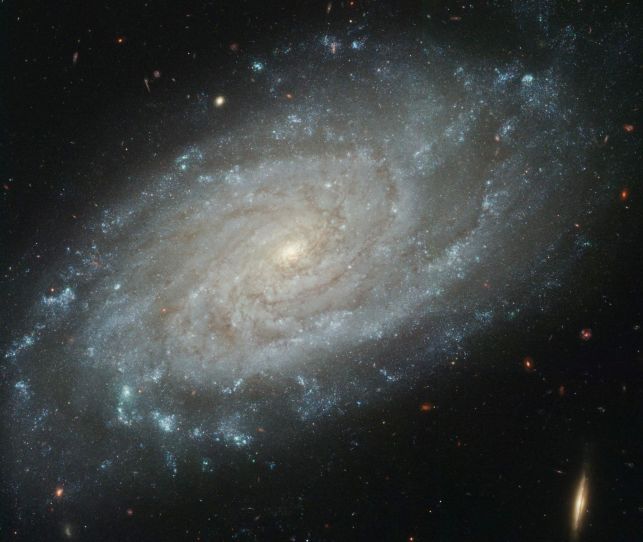Subscribe to receive new posts:
Posts Tagged ‘origin’
The Cosmos, Oneness and Judaism: Are Pantheism and Panentheism Kosher for Jews?
The psalmist and the skeptic and the prophet and the professor look at the universe in which we find ourselves, see the same stars, feel the warmth of the same sun, hear thunder pealing from the same sky, understand the processes by which nature unfolds in spring, retreats in fall only to regenerate again the following year, and yet often draw different conclusions from the same observable data. So, for instance, in response to the emergence of humankind, a non-theist might merely record the evolutionary data or might, like cell biologist Ursula Goodenough, marvel at the improbability, the mystery, and the grandeur of our existence. (See, e.g., The Sacred Depths of Nature (Oxford University Press 2000).) The traditional Jewish believer, by contrast, might offer a prayer to the Supreme Being: Blessed are You, sovereign of the universe, who has fashioned us from the dust of the Earth in Your image and breathed our soul into us.
Is there another way, a way to attempt to understand one’s place in the cosmos that is consistent with current scientific knowledge, and yet recognizes the miracle of our presence without dependence on some supernatural being? Is there an approach to the cosmos which might be attractive to many, perhaps most, American Jews who do not believe in the traditional personal God who dominates the Torah, but nevertheless accept the existence of (and may even yearn for) some extraordinary power, force or spirit which pervades all that is? (See Post March 14, 2012) And, if so, is that path kosher? read more
Science and Judaism: WWMD? What Would Maimonides Do?

Credit: NASA AS8-14-2383
Rabbi Moshe ben Maimon, Maimonides, also known by the acronym Rambam, lived just over eight hundred years ago (1138-1204 CE). He never saw the planet Earth as astronaut William Anders did on December 24, 1968 when module pilot Anders took the now iconic photograph above while flying over the lunar surface during the first manned orbit of the Moon. We do not know if Maimonides even imagined such a sight.

Credit: NASA/JPL P41508
The picture above shows Earth with the Moon in the background. This scene was captured by the Galileo Orbiter on December 16, 1992 at a distance of almost four million miles from our home planet. Maimonides never had the opportunity to see Earth and Moon from this perspective either.
Credit: NASA, The Hubble Heritage Team and A. Riess (STSci). PRC2003-24.
Living some four hundred years before Nicolaus Copernicus considered the nature of the solar system and Galileo Galilei fashioned his first telescope, Maimonides did not realize that the Earth circled the Sun, and not the other way around as was commonly understood in his day. Nor could he have known that the Sun was but one medium sized star in a rather unremarkable galaxy known as the Milky Way which spans 100,000 light years and is similar in size and shape to the spiral galaxy NGC 3370 shown above in a picture taken by the Hubble Space Telescope. Similarly, he would not have known either that our galaxy consisted of a few hundred billion stars, give or take, or that the Milky Way was but one of perhaps a hundred billion galaxies, give or take, in the visible universe. See Tyson and Goldsmith, Origins (W.W. Norton, 2005), at 27, 150. read more



